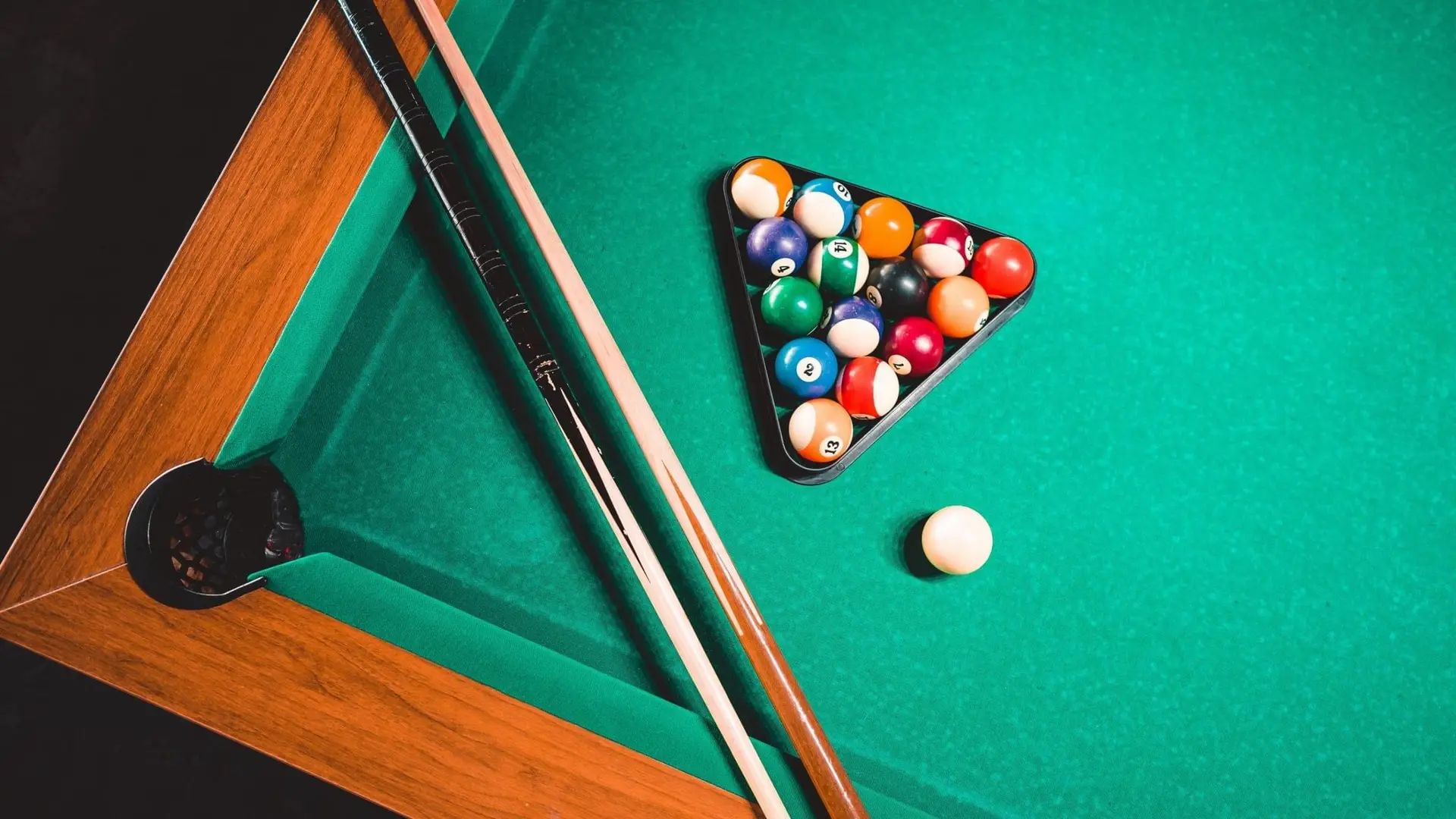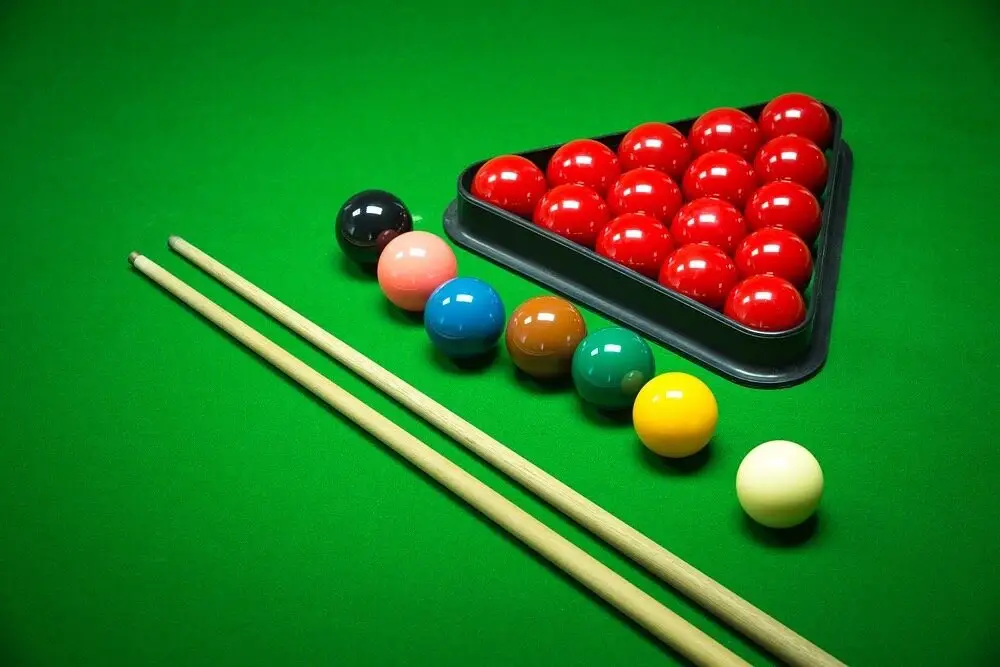Modern types of billiards are very diverse. Although the rules may seem similar, each variety of billiards requires unique skills, different levels of preparation, and a special psychological approach. To objectively determine which type of billiards is the most difficult, it is necessary to analyze each discipline in detail based on key parameters: technique, pace, table size, shot accuracy, number of variables, and level of competition.
Which Type of Billiards Is the Most Difficult: Parameters Forming the Rating
The complexity in billiards does not adhere to a single indicator. An objective analysis is only possible when evaluating all factors. For example:

- Ball diameter, weight, and reaction to the force of impact.
- Table size and specific surface characteristics (cloth, sliding).
- Number of balls and the sequence of pocketing them.
- Game speed and duration of plays.
- Level of professional competition and international recognition.
- Cue control level, required angle of view, accuracy of hitting the target.
- Player’s psychological requirements — concentration, endurance, combination calculation.
Upon comparison, it becomes clear that billiards is not just a set of balls and tables, but a system where minimal deviations determine the level of mastery.
French Carom: Mathematical Puzzle Without Pockets
French carom (carom) is a game played on a table without pockets with three balls. To score a point, a player must make the cue ball touch the other two balls, often through a cushion or a series of complex caroms. This is one of the oldest forms of the game, dating back to the 19th century.
Why carom is one of the candidates for the title of the most difficult type of billiards:
- The playing area of the table is completely devoid of a pocket target, meaning the sole focus is on intricate geometry and trajectory calculation.
- The table speed is high, any excessive spin leads to a complete disruption of the combination.
- Series of 20+ points are only seen among the elite, for example, by players like Frédéric Caudron (Belgium) or Daniel Sánchez (Spain).
- Calculating the cushion requires knowledge of spin effects, rebound speed, and ball interactions after the initial contact.
Carom demands continuous concentration, as an error results in losing the series. It’s not a game of attack but an architecture of mathematical precision.
9-Ball and 10-Ball Pool: Speed, Tactics, and Psychological Pressure
American pool disciplines, especially 9-ball and 10-ball, have evolved as fast, dynamic formats. They have become the standard for television broadcasts, online battles, and commercial tournaments.
Factors determining the difficulty of pool:
- High player density, especially at WPA championships and Predator Pro Series tournaments.
- Fast game pace. On average, professionals pocket a 9-ball game in 3–4 minutes. Mistakes here come at a high cost because the chance for a comeback is minimal.
- Requirement for versatility. A player must be able to attack, defend, control positions, and apply safeties.
- Tournaments with a double-elimination format require physical and mental endurance: one mistake shortens the path to the final by half.
9-ball is popular, but it’s 10-ball that is considered more precise: players must declare the ball and pocket, minimizing the element of luck. In major tournaments like the US Open or World 10-Ball, this discipline defines the level of a universal master.
Russian Pyramid: Power, Calculation, and Strict Geometry
Russian pyramid is the most impressive (if you can say so) type of billiards. The balls have a diameter of 68 mm, weigh up to 285 grams, and the pockets have a gap of only 2–3 mm from the ball size.
The complexity of this discipline is explained by:
- The minimal pocket size: visually, it seems like the ball won’t fit. Pocketing requires perfect angling up to 1°.
- The demand for both power and precision in a shot simultaneously. This is especially evident in “American” pyramid, a variation allowing any ball to be pocketed.
- The absence of serial attacks. A player must either set up perfectly or play defensively. It’s here that the talents of Evgeny Sturua and Yaroslav Vinokur shine.
- The duration of games: matches can last 3–4 hours. In the final of the Kremlin Cup 2021, a 7:6 score took almost 3.5 hours, with the deciding shot being crucial.
Pyramid requires an unconventional approach. Here, a player doesn’t just roll balls — they create logistics on the field, as if arranging chess pieces.
Snooker: Theatrical Discipline with Chess-like Logic
Snooker is the elite of the billiards world. The table length is 12 feet. Ball size is 52 mm. The pockets are rounded but highly sensitive to attacking angles.
Factors proving the complexity of snooker:
- Duration of a frame. One frame lasts 15–30 minutes, sometimes up to 50. Matches can go on for 6–7 hours.
- The need to build a series of 15 reds with blacks (7 points each), requiring perfect positional thinking.
- Psychological pressure. An error in the middle of a frame can lead to the opponent making a 70+ break without a response.
- Intense competition. In the WST rankings, there are over 100 active professionals, each a potential champion. Ronnie O’Sullivan, Judd Trump, and Neil Robertson have held top positions for at least 10 years.
Snooker combines everything: technique, strategy, resilience, and the art of concentration. It’s the only discipline where a game without spectators loses half of its essence.

Which Type of Billiards Is the Most Difficult Based on Technical Characteristics
Key parameters for assessing difficulty:
- Number and weight of balls. For example, snooker has 22 balls weighing 140 g each, carom has 3 balls weighing 205 g each, Russian pyramid has 16 balls weighing 285 g each.
- Table size: pyramid — 12 feet, pool — 9 feet, carom — 10 feet, snooker — 12 feet.
- Preparation level: for snooker — 6–8 years to reach a professional level, carom — a minimum of 4 years for consistent breaks, Russian pyramid — 5 years with daily practice.
- Allowed error count: carom — one mistake = end of the break. Snooker — one mistake = lost frame.
- Match duration: snooker — up to 11 frames lasting 30 minutes each, pyramid — 7–9 games with 60 shots each.
Conclusion
Objectively determining which type of billiards is the most difficult can only be done through the lens of a specific player. Snooker is the most difficult due to a combination of factors: field size, series logic, psychology, and match length. Carom excels in geometric precision. Russian pyramid is the absolute leader in strict scoring conditions. Pool sets the standard for pace, balance of attack and defense.
 en
en  ru
ru  de
de  ar
ar  es
es  nl
nl  hi
hi  fr
fr  it
it  pt
pt  el
el 



